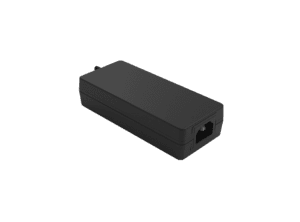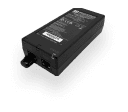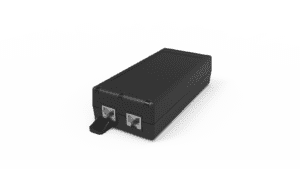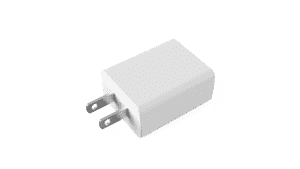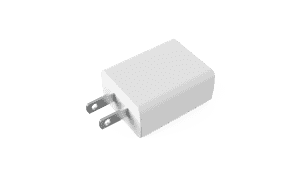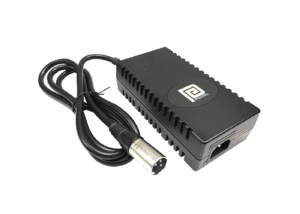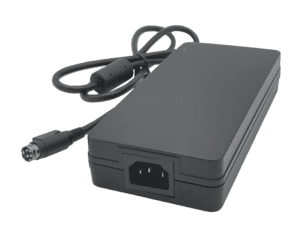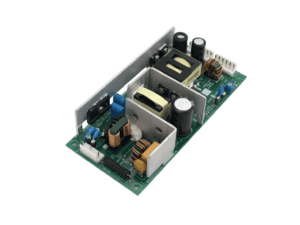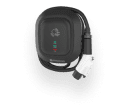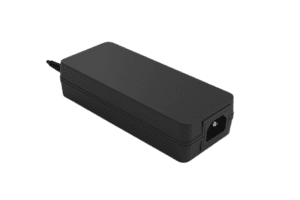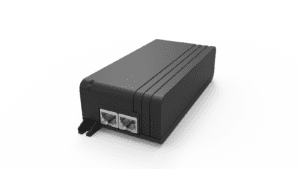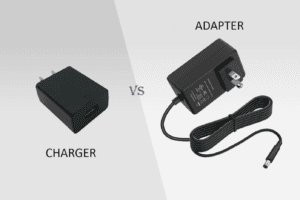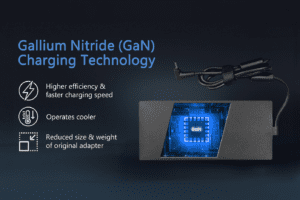BLOG
Top Sustainable Power Supply Manufacturer: Power Adapter Solutions for Green Electronics Supply Chains
Table of contents
- Why Sustainable Power Supply Design Matters in Green Electronics
- What to Look for in a Sustainable Power Supply Manufacturer
- How Energy-Efficient Power Adapters Reduce Carbon Impact
- The Role of Supply Chain Transparency in Sustainable Electronics
- Why Phihong Is a Trusted Sustainable Power Supply Manufacturer
- How to Get Started with a Sustainable Power Supply Strategy
- FAQ

As sustainability becomes a top priority across industries, OEMs are under growing pressure to design products that meet environmental goals—without sacrificing performance or reliability. One of the most overlooked opportunities for greener electronics lies in the power supply. Choosing a sustainable power supply manufacturer can help you reduce your product’s carbon footprint, improve energy efficiency, and align with both regulatory and customer expectations.
From energy-efficient wall adapters to RoHS-compliant components and recyclable packaging, power adapter manufacturers are stepping up to offer environmentally responsible solutions that support today’s green electronics supply chains. But how do you find the right partner?
This guide explores the key features of a sustainable power supply manufacturer, what to look for in eco-friendly power adapters, and how OEMs can contribute to a more responsible electronics ecosystem.
Why Sustainable Power Supply Design Matters in Green Electronics
Power adapters may seem small, but they can have a big environmental impact—especially when scaled across millions of units. From the energy they consume to the materials they’re made from, power adapters are an essential part of any product’s environmental footprint.Power adapters, despite their often unassuming size, can exert a substantial influence on the environment, particularly when their production and use are amplified across millions of units. This impact manifests in various ways, from the energy consumed during their operation to the raw materials utilized in their construction. These factors combine to position power adapters as a key component in determining the overall environmental footprint of any electronic product.
The energy consumption of power adapters is a primary concern. Inefficient adapters draw more power from the grid than necessary, leading to increased greenhouse gas emissions and other forms of pollution. Additionally, the materials used to manufacture power adapters can have significant environmental implications. The extraction and processing of these materials can contribute to habitat destruction, water pollution, and other environmental problems. Moreover, the disposal of power adapters at the end of their life cycle can also generate environmental harm if not managed responsibly.
Therefore, it is crucial to consider the environmental impact of power adapters throughout their entire life cycle, from design and manufacturing to use and disposal. By prioritizing energy efficiency, sustainable materials, and responsible disposal practices, manufacturers can significantly reduce the environmental footprint of power adapters and contribute to a more sustainable electronics industry.
What Makes a Power Supply Sustainable
- High energy efficiency ratings (DOE Level VI, EU CoC Tier 2, Energy Star)
- Compliance with RoHS, REACH, and WEEE regulations
- Reduced standby power consumption
- Eco-friendly materials and recyclable designs
- Extended product lifespan and repairability
Best Practices for OEMs
- Prioritize low-noise, high-efficiency power designs
- Ask suppliers about material sourcing and recyclability
- Choose manufacturers that minimize packaging waste and carbon emissions
By choosing eco-conscious power supplies, OEMs can reduce energy use, lower lifecycle emissions, and meet consumer demand for greener electronics.
What to Look for in a Sustainable Power Supply Manufacturer
Not all power supply manufacturers are created equal when it comes to sustainability. The right partner should offer not only green products but also a supply chain and production model that supports your environmental goals.When selecting a power supply manufacturer, it’s crucial to look beyond their product offerings and evaluate their overall commitment to sustainability.
A truly “green” partner will not only provide energy-efficient power supplies but also demonstrate sustainable practices throughout their entire supply chain and production process. This includes responsible sourcing of materials, minimizing waste and pollution during manufacturing, optimizing energy use, and implementing ethical labor practices. Additionally, they should be transparent about their environmental impact and actively work to reduce it over time. By partnering with a power supply manufacturer that prioritizes sustainability, you can ensure that your electronics supply chain aligns with your environmental goals and contributes to a more sustainable future.
Qualities of a Green Manufacturer
- Adherence to international environmental regulations (RoHS, WEEE, REACH)
- Use of recyclable or biodegradable packaging materials
- Sustainable sourcing of components and raw materials
- Energy-efficient production processes and facilities
- Lifecycle analysis and environmental impact transparency
Best Practices for Supplier Evaluation
- Review the manufacturer’s environmental certifications and compliance history
- Ask about their energy use, emissions reporting, and sustainability programs
- Consider manufacturers with ISO 14001 certification for environmental management
A manufacturer committed to sustainable practices will make it easier for OEMs to align their products with global ESG goals and marketplace expectations.
How Energy-Efficient Power Adapters Reduce Carbon Impact
Energy-efficient power adapters don’t just help customers save on electricity—they help reduce global emissions. With billions of adapters in use around the world, even small improvements in power efficiency can translate to massive energy savings and lower carbon footprints.Energy-efficient power adapters play a crucial role in global sustainability efforts. Their benefits extend far beyond individual cost savings on electricity bills. Given the billions of power adapters in use worldwide, even minor enhancements in their power efficiency can have a substantial cumulative impact. This translates to massive energy savings on a global scale, significantly reducing carbon footprints and contributing to a more sustainable future.
The widespread adoption of energy-efficient power adapters aligns with the growing emphasis on environmental responsibility and sustainable practices. As businesses and individuals alike become increasingly conscious of their ecological impact, the demand for energy-efficient technologies continues to rise. By choosing power adapters that prioritize energy efficiency, consumers actively participate in global efforts to mitigate climate change and promote a cleaner, greener planet.
Benefits of Energy-Efficient Adapter Design
- Lower power draw in active and standby modes
- Reduced heat generation, improving reliability and lifespan
- Compliance with regulatory standards like DOE Level VI and Energy Star
- Support for global voltage and frequency ranges to minimize waste
Best Practices for OEMs Focused on Energy Efficiency
- Specify efficiency levels above 90% for full load conditions
- Request adapters with low standby power (less than 0.1W)
- Choose designs that meet or exceed DOE Level VI and EU energy directives
When you select a highly efficient power adapter, you’re not only improving product performance—you’re making a measurable contribution to a more sustainable electronics industry.
CLIENT'S QUOTE
"Phihong’s PoE solutions have made a huge difference for us! Our network runs more efficiently, and we’ve seen real cost savings. We couldn’t be happier!"
The Role of Supply Chain Transparency in Sustainable Electronics
Sustainability in electronics isn’t just about the final product—it’s also about how it’s made. More OEMs are demanding transparency from their suppliers to ensure environmental claims are backed by real data and responsible sourcing.Sustainability in the electronics industry has evolved beyond a focus on the end product to encompass the entire manufacturing process. Original Equipment Manufacturers (OEMs) are increasingly holding their suppliers accountable for sustainable practices, demanding transparency and verifiable data to support environmental claims. This shift highlights the growing importance of responsible sourcing and supply chain sustainability in the electronics sector.
OEMs are now seeking partners who can demonstrate a commitment to sustainability throughout their operations, from raw material extraction to product assembly and end-of-life management. This includes factors such as energy efficiency, waste reduction, water conservation, and the use of environmentally friendly materials. By partnering with suppliers who prioritize sustainability, OEMs can reduce their environmental footprint, mitigate risks associated with non-compliant practices, and meet the growing consumer demand for eco-friendly products.
The emphasis on transparency and data-driven evidence underscores the need for standardized metrics and reporting frameworks for sustainability in the electronics supply chain. This will enable OEMs to make informed decisions about their suppliers, track progress over time, and communicate their sustainability efforts to stakeholders. As the electronics industry continues to evolve, sustainability will remain a key driver of innovation and competitive advantage, shaping the relationships between OEMs and their suppliers.
Why Supply Chain Transparency Matters
- Helps verify that raw materials are ethically and sustainably sourced
- Supports ESG reporting and corporate sustainability commitments
- Builds consumer trust by showing accountability from top to bottom
- Enables carbon footprint tracking and reduction planning
Best Practices for OEMs
- Ask suppliers for environmental and sourcing disclosures
- Look for certifications like ISO 14001 or third-party sustainability audits
- Choose partners who publish impact reports and offer full traceability
Transparent suppliers make it easier for OEMs to meet their own green goals while building products that reflect modern consumer values.
Why Phihong Is a Trusted Sustainable Power Supply Manufacturer
Phihong has been designing and manufacturing energy-efficient power adapters for decades—and we’re committed to sustainability at every level. From our materials and engineering choices to our global supply chain, we help OEMs reduce environmental impact without compromising performance or reliability.
What Sets Phihong Apart
- High-efficiency power adapters that meet DOE Level VI, Energy Star, and EU CoC standards
- RoHS and REACH-compliant components across all product lines
- Sustainable manufacturing processes, including waste reduction and energy-efficient facilities
- Custom solutions optimized for lower standby power, recyclable materials, and long product lifespan
- Support for ESG goals with full product documentation and environmental traceability
Whether you’re launching a new product line or updating legacy hardware to align with today’s environmental standards, Phihong offers certified, dependable solutions designed for a greener electronics supply chain.
How to Get Started with a Sustainable Power Supply Strategy
Building sustainability into your product isn’t just good for the planet—it’s good business. Consumers, regulators, and investors are all looking at how electronics brands manage their environmental impact. The power supply is a great place to start.
Key First Steps for OEMs
- Define sustainability targets that align with your product roadmap
- Audit current power components for efficiency, recyclability, and certifications
- Engage with manufacturers who can support long-term environmental goals
- Plan ahead for EOL (end-of-life) management, recycling, and regulatory updates
Best Practices for OEMs Getting Started
- Integrate sustainability reviews into your design and sourcing processes
- Choose suppliers who make environmental performance a core part of their offering
- Consider the full lifecycle of your power adapter—not just the initial specs
With the right power supply strategy, you can improve product efficiency, reduce carbon impact, and build devices that support a healthier planet.

Contact Our Team Today!
Our dedicated sales team and international partners are prepared to support you with your latest projects and initiatives globally.
Explore More with Phihong USA
As we conclude our exploration of PoE technology, it’s evident how these innovations are streamlining power and data integration across various industries. Phihong USA stands at the forefront of this technological advancement, offering a diverse range of power solutions designed to meet the evolving needs of modern industries.
Phihong USA’s extensive product lineup includes:
- Power over Ethernet (PoE) Solutions: Delivering reliable power and data transmission over a single cable, ideal for simplifying network installations and reducing costs.
- AC/DC Adapters and Power Supplies: From compact adapters to industrial-grade power supplies, Phihong provides solutions that ensure efficiency and reliability in various applications.
- Battery Chargers: Customizable chargers for lithium-ion and lead-acid batteries, supporting a wide range of power requirements for mobility and industrial applications.
- Medical Power Supplies: Specialized power solutions designed to meet the stringent requirements of the healthcare industry, ensuring safety and reliability.
Phihong USA is committed to innovation and excellence, continually developing products that meet the highest standards of performance and reliability. Their global reach and dedication to customer support make them a trusted partner in powering the future.
Here are some useful links to explore Phihong USA’s offerings further and bring in new potential clients:
Visit Phihong USA to discover how their advanced power solutions can support your business needs. Whether you’re looking to upgrade your network, or find reliable power supplies, Phihong USA has you covered.
By choosing Phihong USA, you’re partnering with a leader in power technology, ensuring your operations run smoothly and efficiently with top-tier power solutions. Contact Us today!
FAQ
What makes a power adapter “sustainable”?
A sustainable power adapter is designed and manufactured with the environment in mind. That means it’s built to use energy efficiently, minimize harmful materials, and support recycling or extended use. For example, a high-efficiency adapter reduces electricity waste both in use and during standby, lowering overall power consumption.
Sustainable adapters are also built using components that comply with environmental standards like RoHS (Restriction of Hazardous Substances) and REACH (chemical safety regulation). This ensures they don’t contain hazardous materials like lead, mercury, or cadmium that can harm the environment or human health.
In addition, a sustainable adapter is often manufactured by a company that prioritizes eco-friendly practices. This could include reducing energy use in production facilities, using recyclable packaging, or supporting ethical sourcing of materials.
Durability plays a role too. Adapters designed for longer product lifecycles create less waste because they don’t need to be replaced as often. Combined with the right recycling or take-back program, these designs help reduce e-waste.
In short, a sustainable power adapter reduces its environmental footprint throughout its life—from materials to energy use to end-of-life disposal.
Why is energy efficiency important in power adapters?
Energy efficiency is critical because it directly affects both environmental impact and operating costs. A more efficient power adapter converts a higher percentage of input electricity into usable power for your device, wasting less energy as heat. This lowers power consumption, reduces heat buildup, and improves the overall performance and lifespan of your device.
From a sustainability standpoint, efficient power adapters reduce greenhouse gas emissions at scale. With billions of devices using external power supplies worldwide, small improvements in energy usage can result in significant carbon savings globally.
Regulatory bodies like the U.S. Department of Energy (DOE) and the European Union have introduced strict standards to improve power supply efficiency. For example, DOE Level VI sets requirements for efficiency at both full load and no-load conditions (when the device is plugged in but not actively charging).
For OEMs, using efficient power adapters helps meet compliance standards, reduce costs, and align with growing consumer and regulatory expectations for greener electronics. In many markets, it’s not just a nice-to-have—it’s a requirement.
What certifications should a sustainable power adapter have?
Certifications are the best way to ensure a power adapter meets recognized environmental and safety standards. For sustainability-focused OEMs, here are the most important certifications to look for:
- DOE Level VI (U.S.): Sets strict standards for active and standby energy efficiency in external power supplies.
- Energy Star (U.S.): Indicates high energy efficiency, especially for consumer electronics.
- EU CoC Tier 2: European equivalent of DOE Level VI for external power supplies.
- RoHS (EU): Ensures the product is free from hazardous substances like lead, cadmium, and mercury.
- REACH (EU): Focuses on safe chemical use and labeling for environmental and human health.
- WEEE (EU): Ensures proper collection, recycling, and recovery of electronic waste.
- ISO 14001: Certification for environmental management systems in manufacturing.
These certifications help OEMs meet compliance requirements, improve environmental performance, and gain customer trust. Always ask your power supply manufacturer for full certification documentation during the sourcing process.
How do sustainable power supplies affect overall product design?
Sustainable power supplies can influence many aspects of product design—including form factor, thermal management, material selection, and even the regulatory path to market. Because sustainable adapters are often more efficient, they produce less heat, which in turn allows for smaller heatsinks or more compact enclosures.
Material selection may also be affected. For instance, choosing recyclable materials for the enclosure or connectors can reduce environmental impact and support circular economy initiatives.
Additionally, sustainable power supplies are typically built to last longer, which may lead to fewer maintenance issues or replacements. This improves customer satisfaction and supports product longevity—a key part of many ESG goals.
From a compliance perspective, incorporating certified, sustainable components can simplify regulatory approvals and reduce the likelihood of delays or penalties during audits or certification reviews.
In short, by integrating sustainability into your power supply strategy, you’re not only improving the adapter itself—you’re improving the overall design, performance, and environmental impact of your entire product.
Why do OEMs trust Phihong for sustainable power supply solutions?
OEMs trust Phihong because we combine decades of technical excellence with a strong commitment to environmental responsibility. Our power supplies are designed to meet the highest energy efficiency standards—such as DOE Level VI and EU CoC Tier 2—while also supporting global environmental certifications like RoHS, REACH, and WEEE.
Phihong invests in sustainable manufacturing, using energy-efficient production processes, recyclable packaging, and low-impact materials. Our facilities support ISO 14001 environmental management standards, and our teams actively monitor global regulatory changes to help OEMs stay compliant.
We work closely with OEMs to deliver custom or off-the-shelf power adapter solutions that meet both performance and sustainability goals. Whether you need a compact adapter for consumer electronics or a rugged unit for industrial IoT, we offer high-efficiency designs that reduce energy use and environmental impact.
Beyond product specs, we provide lifecycle support, sourcing transparency, and the documentation you need to meet ESG goals and pass global compliance checks.
That’s why Phihong is more than just a manufacturer—we’re a sustainability partner for brands building the future of green electronics.

